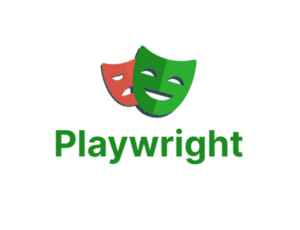The adoption of digital onboarding represents a paradigm shift in the lending industry. Lenders leveraging technological advancements can streamline onboarding, enhance customer satisfaction, and drive operational efficiency. Lenders can demonstrate their commitment to providing a modern and customer-centric experience, setting themselves apart from competitors.
Weighing the Options: Onboarding Solutions and Their Pros and Cons
Electronic Signature Solutions
An integral part of a fully digital onboarding process is the implementation of electronic signatures secured with OTP (One-Time Password). With this approach, customers can seamlessly complete the onboarding flow online. The system generates the necessary documents for signature, which can be instantly reviewed in real-time or downloaded for future reference. This ensures a secure and efficient onboarding experience, eliminating the need for physical paperwork.
Click here to explore the top Electronic Signature Softwares.
Pros
Cons
Pros
- Electronic signature solutions enable lenders to obtain legally binding signatures electronically, eliminating the need for physical paperwork.
- They offer convenience and speed and enhance the overall customer experience.
Cons
- Some customers may still need clarification about the security and validity of electronic signatures.
- Ensuring compliance with relevant regulations and addressing data privacy and security concerns is essential.
Identity Verification Solutions
Digital identity verification services use advanced technologies, such as facial recognition, document verification, and biometric authentication, to confirm the customer’s identity. Users typically provide their personal information and submit supporting documents online. The service then analyzes the data and documents to authenticate the user’s identity, comparing it against various trusted data sources and verification checks to ensure accuracy and detect potential fraud.
Leading Identity Verification Software: Learn more
Pros
Cons
Pros
- This solution utilizes advanced techniques to verify identities, reducing the risk of fraud and identity theft.
- Automated verification processes streamline onboarding, reducing manual effort, paperwork, and associated costs while accelerating customer onboarding or user authentication.
- Users can undergo identity verification remotely, eliminating the need for physical presence and enabling seamless onboarding or account access from anywhere.
Cons
- The accuracy of identity verification services may vary, and false positives or negatives can occur.
- Collecting and processing personal data for verification raises privacy and security concerns.
- Digital identity verification relies on technology infrastructure, internet access, and user familiarity with digital processes. This may pose challenges for individuals who need more of these
Digital Document Management Solutions
A digital document management solution is a major digital onboarding solution that enhances the process’s efficiency and organization. It enables the storage, organization, retrieval, and sharing of digital documents in a centralized electronic repository. Documents are typically scanned or uploaded into the system, where they can be indexed, tagged, and categorized for easy searching and retrieval.
Check out the list of some best Document Management Software.
Pros
Cons
Pros
- Digital document management systems allow lenders to store, manage, and retrieve customer documents electronically and securely.
- It eliminates the need for physical storage, reduces paperwork, and enables efficient document sharing and collaboration.
Cons
- Implementing a digital document management system may require an initial investment in technology infrastructure and staff training.
- Effectiveness of proper data encryption and security measures to protect sensitive customer information is still in doubt among customers.
Digital Onboarding Platforms
Digital onboarding platforms provide a user-friendly interface for individuals to submit their applications electronically. Users can access the platform via a web or mobile application, input their personal information, and provide necessary documents. The platform may include features such as form validation, document upload capabilities, and real-time feedback to guide users through the application process.
Click here to learn more about the top Digital Onboarding Software Platforms.
Pros
Cons
Pros
- Offer convenience, faster processing, and an improved user experience.
- Reduce costs, improve data accuracy, and enable seamless integration with other systems, resulting in greater efficiency and a streamlined application process.
Cons
- Need for reliable internet connectivity, possible technical issues or system downtime that may disrupt the application process.
- The possibility of user unfamiliarity or resistance to digital platforms, which could affect adoption rates.
Customer Relationship Management (CRM) Systems
In the digital onboarding journey, a CRM system can capture, organize, and leverage customer information to enhance the onboarding process. A CRM system integrates various touchpoints and channels to collect customer data, including contact details, preferences, communication history, and interactions. This data is then stored, organized, and made accessible to relevant stakeholders involved in the onboarding process. It is a centralized hub for customer information, facilitating effective communication, task management, and data-driven decision-making in the digital onboarding journey.
Here is a curated list of the best CRM Software solutions.
Pros
Cons
Pros
Using CRM systems, lenders can effectively manage customer interactions, streamline the onboarding process, improve customer communication, and foster long-term customer relationships beyond the initial onboarding stage.
Cons
- Implementing a CRM system in the customer onboarding journey can come with the drawback of requiring upfront investment and staff training. This initial cost and time investment may pose a challenge for lending institutions.
- Selecting a CRM solution that precisely aligns with the specific needs and scale of the lending institution is crucial. Failure to choose the right CRM system may lead to inefficiencies
Striking a Balance: Choosing the Right One
A great customer onboarding experience has the power to increase conversions, improve banks’ reputations, and boost efficiencies. While each solution offers unique advantages, it is crucial for lenders to carefully evaluate their specific needs, budget, and customer expectations before selecting the most suitable option.
Let’s check out the factors to consider:
Compliance and Regulatory Requirements: Ensure the solution meets the necessary compliance and regulatory standards, such as KYC (Know Your Customer) and AML (Anti-Money Laundering) regulations.
Scalability and Flexibility: Evaluate the solution’s ability to scale and adapt to the organization’s growing needs and changing requirements.
Integration Capabilities: Consider the solution’s compatibility with existing systems and technologies.
User Experience: A smooth and efficient onboarding process can enhance customer satisfaction and drive engagement.
Security and Data Privacy: Ensure the solution offers robust security measures to protect sensitive customer data.
Analytics and Reporting: The solution should provide valuable insights and generate comprehensive reports on customer onboarding metrics, allowing for data-driven decision-making and continuous improvement.
Cost and Return on Investment (ROI): Evaluate the potential ROI by assessing the solution’s ability to streamline processes, reduce manual efforts, and improve efficiency.
With the right onboarding solution, firms can experience several immediate benefits, including improved completion rates, reduced callbacks, minimized compliance issues, and enhanced customer experience.
Embracing digital onboarding solutions is no longer a luxury but a necessity for lenders looking to stay competitive and deliver exceptional customer experiences in today’s digital age.







